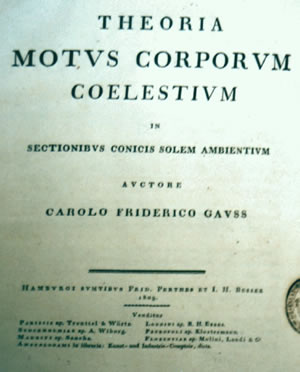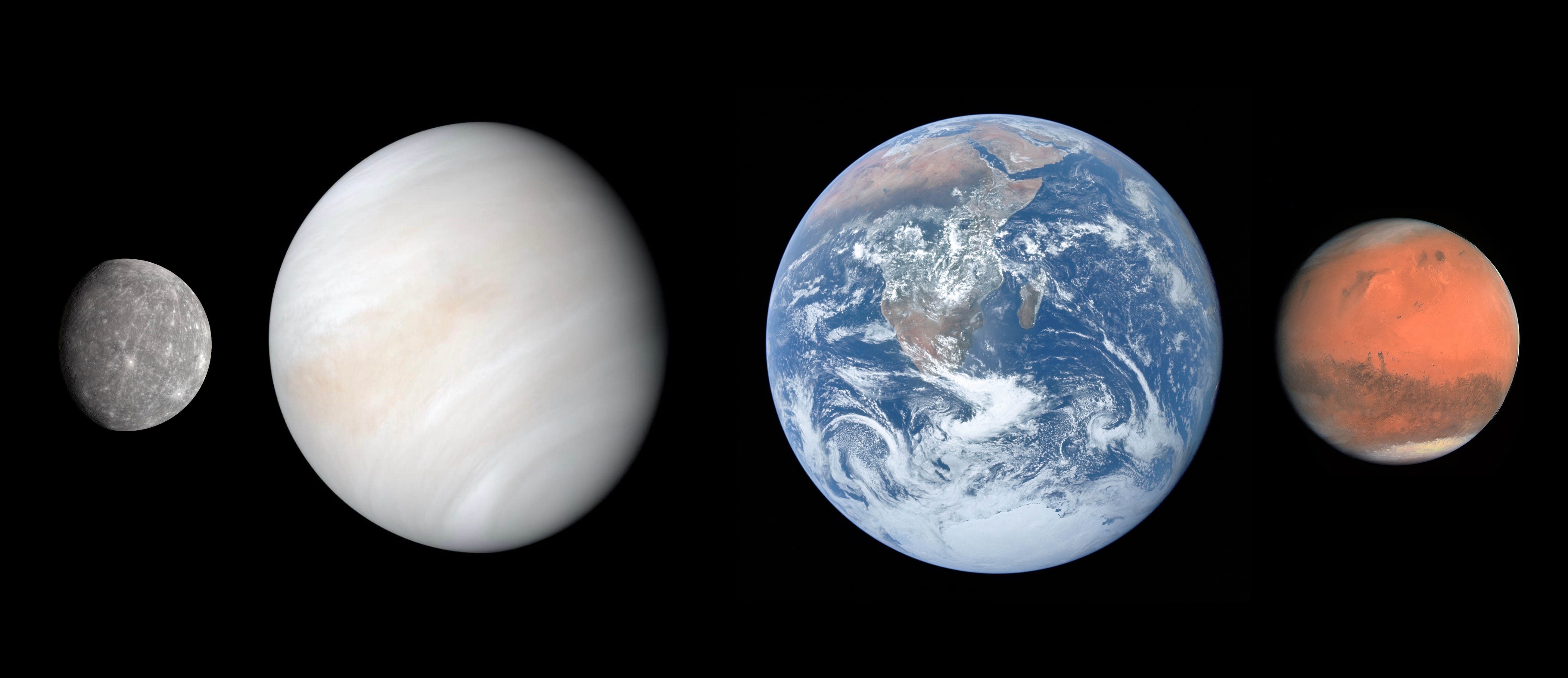|
Astronomical System Of Units
The astronomical system of units, formerly called the IAU (1976) System of Astronomical Constants, is a system of measurement developed for use in astronomy. It was adopted by the International Astronomical Union (IAU) in 1976 via Resolution No. 1, and has been significantly updated in 1994 and 2009 (see astronomical constant). The system was developed because of the difficulties in measuring and expressing astronomical data in International System of Units (SI units). In particular, there is a huge quantity of very precise data relating to the positions of objects within the Solar System which cannot conveniently be expressed or processed in SI units. Through a number of modifications, the astronomical system of units now explicitly recognizes the consequences of general relativity, which is a necessary addition to the International System of Units in order to accurately treat astronomical data. The astronomical system of units is a tridimensional system, in that it defines ... [...More Info...] [...Related Items...] OR: [Wikipedia] [Google] [Baidu] |
Systems Of Measurement
A system of measurement is a collection of units of measurement and rules relating them to each other. Systems of measurement have historically been important, regulated and defined for the purposes of science and commerce. Systems of measurement in use include the International System of Units or (the modern form of the metric system), the British imperial system, and the United States customary system. History The French Revolution gave rise to the metric system, and this has spread around the world, replacing most customary units of measure. In most systems, length (distance), mass, and time are ''base quantities''. Later science developments showed that an electromagnetic quantity such as electric charge or electric current could be added to extend the set of base quantities. Gaussian units have only length, mass, and time as base quantities, with no separate electromagnetic dimension. Other quantities, such as power and speed, are derived from the base set: for example ... [...More Info...] [...Related Items...] OR: [Wikipedia] [Google] [Baidu] |
Julian Year (astronomy)
In astronomy, a Julian year (symbol: a or aj) is a unit of measurement of time defined as exactly 365.25 days of SI seconds each.P. Kenneth Seidelmann, ed.''The explanatory supplement to the Astronomical Almanac'' (Mill Valley, Cal.: University Science Books, 1992), pp. 8, 696, 698–9, 704, 716, 730. Reprinted from the "IAU Style Manual" by G.A. Wilkinson, Comm. 5, in IAU Transactions XXB (1987).Harold Rabinowitz and Suzanne Vogel''The manual of scientific style''(Burlington, MA: Academic Press, 2009) 369. The length of the Julian year is the average length of the year in the Julian calendar that was used in Western societies until the adoption of the Gregorian Calendar, and from which the unit is named. Nevertheless, because astronomical Julian years are measuring duration rather than designating dates, this Julian year does not correspond to years in the Julian calendar or any other calendar. Nor does it correspond to the many other ways of defining a year. Usage Th ... [...More Info...] [...Related Items...] OR: [Wikipedia] [Google] [Baidu] |
Constant Of Gravitation
The gravitational constant (also known as the universal gravitational constant, the Newtonian constant of gravitation, or the Cavendish gravitational constant), denoted by the capital letter , is an empirical physical constant involved in the calculation of gravitational effects in Sir Isaac Newton's law of universal gravitation and in Albert Einstein's theory of general relativity. In Newton's law, it is the proportionality constant connecting the gravitational force between two bodies with the product of their masses and the inverse square of their distance. In the Einstein field equations, it quantifies the relation between the geometry of spacetime and the energy–momentum tensor (also referred to as the stress–energy tensor). The measured value of the constant is known with some certainty to four significant digits. In SI units, its value is approximately The modern notation of Newton's law involving was introduced in the 1890s by C. V. Boys. The first impli ... [...More Info...] [...Related Items...] OR: [Wikipedia] [Google] [Baidu] |
Gaussian Gravitational Constant
The Gaussian gravitational constant (symbol ) is a parameter used in the orbital mechanics of the Solar System. It relates the orbital period to the orbit's semi-major axis and the mass of the orbiting body in Solar masses. The value of historically expresses the mean angular velocity of the system of Earth+Moon and the Sun considered as a two body problem, with a value of about 0.986 degrees per day, or about 0.0172 radians per day. As a consequence of law of gravitation and Kepler's third law, is directly proportional to the square root of the standard gravitational parameter of the Sun, and its value in radians per day follows by setting Earth's semi-major axis (the astronomical unit, au) to unity, :(rad/d) ()0.5·au−1.5. A value of rad/day was determined by Carl Friedrich Gauss in his 1809 work ''Theoria Motus Corporum Coelestium in Sectionibus Conicis Solem Ambientum'' ("Theory of the Motion of the Heavenly Bodies Moving about the Sun in Conic Sections"). Gau ... [...More Info...] [...Related Items...] OR: [Wikipedia] [Google] [Baidu] |
Terrestrial Planet
A terrestrial planet, telluric planet, or rocky planet, is a planet that is composed primarily of silicate rocks or metals. Within the Solar System, the terrestrial planets accepted by the IAU are the inner planets closest to the Sun: Mercury, Venus, Earth and Mars. Among astronomers who use the geophysical definition of a planet, two or three planetary-mass satellites – Earth's Moon, Io, and sometimes Europa – may also be considered terrestrial planets; and so may be the rocky protoplanet-asteroids Pallas and Vesta.Emily Lakdawalla et al.What Is A Planet?The Planetary Society, 21 April 2020 The terms "terrestrial planet" and "telluric planet" are derived from Latin words for Earth (''Terra'' and ''Tellus''), as these planets are, in terms of structure, ''Earth-like''. Terrestrial planets are generally studied by geologists, astronomers, and geophysicists. Terrestrial planets have a solid planetary surface, making them substantially different from the larger gaseous ... [...More Info...] [...Related Items...] OR: [Wikipedia] [Google] [Baidu] |
Brown Dwarfs
Brown dwarfs (also called failed stars) are substellar objects that are not massive enough to sustain nuclear fusion of ordinary hydrogen (hydrogen-1, 1H) into helium in their cores, unlike a main sequence, main-sequence star. Instead, they have a mass between the most massive gas giant planets and the least massive stars, approximately 13 to 80 Jupiter mass, times that of Jupiter (). However, they can deuterium burning, fuse deuterium (deuterium, 2H), and the most massive ones (> ) can lithium burning, fuse lithium (lithium-7, 7Li). Astronomers classify self-luminous objects by spectral classification, spectral class, a distinction intimately tied to the surface temperature, and brown dwarfs occupy types M, L, T, and Y. As brown dwarfs do not undergo stable hydrogen fusion, they cool down over time, progressively passing through later spectral types as they age. Despite their name, to the naked eye, brown dwarfs would appear in different colors depending on their temperatur ... [...More Info...] [...Related Items...] OR: [Wikipedia] [Google] [Baidu] |
Extrasolar Planet
An exoplanet or extrasolar planet is a planet outside the Solar System. The first possible evidence of an exoplanet was noted in 1917 but was not recognized as such. The first confirmation of detection occurred in 1992. A different planet, initially detected in 1988, was confirmed in 2003. There are many methods of detecting exoplanets. Transit photometry and Doppler spectroscopy have found the most, but these methods suffer from a clear observational bias favoring the detection of planets near the star; thus, 85% of the exoplanets detected are inside the tidal locking zone. In several cases, multiple planets have been observed around a star. About 1 in 5 Sun-like starsFor the purpose of this 1 in 5 statistic, "Sun-like" means G-type star. Data for Sun-like stars was not available so this statistic is an extrapolation from data about K-type stars. have an "Earth-sized"For the purpose of this 1 in 5 statistic, Earth-sized means 1–2 Earth radii. planet in the habitable ... [...More Info...] [...Related Items...] OR: [Wikipedia] [Google] [Baidu] |
Outer Planet
The Solar SystemCapitalization of the name varies. The International Astronomical Union, the authoritative body regarding astronomical nomenclature, specifies capitalizing the names of all individual astronomical objects but uses mixed "Solar System" and "solar system" structures in theinaming guidelines document. The name is commonly rendered in lower case ('solar system'), as, for example, in the ''Oxford English Dictionary'' an''Merriam-Webster's 11th Collegiate Dictionary''. is the gravitationally bound system of the Sun and the objects that orbit it. It formed 4.6 billion years ago from the gravitational collapse of a giant interstellar molecular cloud. The vast majority (99.86%) of the system's mass is in the Sun, with most of the remaining mass contained in the planet Jupiter. The four inner system planets— Mercury, Venus, Earth and Mars—are terrestrial planets, being composed primarily of rock and metal. The four giant planets of the outer system are substa ... [...More Info...] [...Related Items...] OR: [Wikipedia] [Google] [Baidu] |
Gas Giant
A gas giant is a giant planet composed mainly of hydrogen and helium. Gas giants are also called failed stars because they contain the same basic elements as a star. Jupiter and Saturn are the gas giants of the Solar System. The term "gas giant" was originally synonymous with "giant planet". However, in the 1990s, it became known that Uranus and Neptune are really a distinct class of giant planets, being composed mainly of heavier volatile substances (which are referred to as "ices"). For this reason, Uranus and Neptune are now often classified in the separate category of ice giants. Jupiter and Saturn consist mostly of hydrogen and helium, with heavier elements making up between 3 and 13 percent of their mass.The Interior of Jupiter, Guillot et al., in ''Jupiter: The Planet, Satellites and Magnetosphere'', Bagenal et al., editors, Cambridge University Press, 2004 They are thought to consist of an outer layer of compressed molecular hydrogen surrounding a layer of liquid metalli ... [...More Info...] [...Related Items...] OR: [Wikipedia] [Google] [Baidu] |
International Earth Rotation And Reference Systems Service
The International Earth Rotation and Reference Systems Service (IERS), formerly the International Earth Rotation Service, is the body responsible for maintaining global time and reference frame standards, notably through its Earth Orientation Parameter (EOP) and International Celestial Reference System (ICRS) groups. History The IERS was established in its present form in 1987 by the International Astronomical Union and the International Union of Geodesy and Geophysics, replacing the earlier International Polar Motion Service (IPMS) and the Earth rotation section of the Bureau International de l'Heure (BIH). The service began operation on January 1, 1988. Since its inception, the IERS has established new bureaus including the GPS Coordinating Centre in 1990, the DORIS Coordinating Centre in 1994 and the GGF Coordinating Centre in 1998. The organization was formerly known as International Earth Rotation Service until 2003 when it formally changed its name to its present for ... [...More Info...] [...Related Items...] OR: [Wikipedia] [Google] [Baidu] |
Jupiter
Jupiter is the fifth planet from the Sun and the largest in the Solar System. It is a gas giant with a mass more than two and a half times that of all the other planets in the Solar System combined, but slightly less than one-thousandth the mass of the Sun. Jupiter is the third brightest natural object in the Earth's night sky after the Moon and Venus, and it has been observed since prehistoric times. It was named after the Roman god Jupiter, the king of the gods. Jupiter is primarily composed of hydrogen, but helium constitutes one-quarter of its mass and one-tenth of its volume. It probably has a rocky core of heavier elements, but, like the other giant planets in the Solar System, it lacks a well-defined solid surface. The ongoing contraction of Jupiter's interior generates more heat than it receives from the Sun. Because of its rapid rotation, the planet's shape is an oblate spheroid: it has a slight but noticeable bulge around the equator. The outer atmospher ... [...More Info...] [...Related Items...] OR: [Wikipedia] [Google] [Baidu] |
Earth
Earth is the third planet from the Sun and the only astronomical object known to harbor life. While large volumes of water can be found throughout the Solar System, only Earth sustains liquid surface water. About 71% of Earth's surface is made up of the ocean, dwarfing Earth's polar ice, lakes, and rivers. The remaining 29% of Earth's surface is land, consisting of continents and islands. Earth's surface layer is formed of several slowly moving tectonic plates, which interact to produce mountain ranges, volcanoes, and earthquakes. Earth's liquid outer core generates the magnetic field that shapes the magnetosphere of the Earth, deflecting destructive solar winds. The atmosphere of the Earth consists mostly of nitrogen and oxygen. Greenhouse gases in the atmosphere like carbon dioxide (CO2) trap a part of the energy from the Sun close to the surface. Water vapor is widely present in the atmosphere and forms clouds that cover most of the planet. More sola ... [...More Info...] [...Related Items...] OR: [Wikipedia] [Google] [Baidu] |





